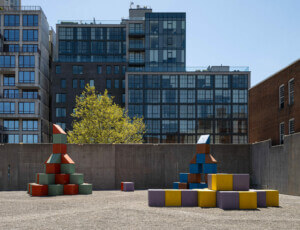Most Americans are intimately familiar with the lowly 2×4, which can be joined together to create the pitched roof of an A-Frame home. These have become symbols of standardization and efficiency, giving shape to millions of suburban homes though the members themselves are often only glimpsed in the unadorned corners of attics and garages. The A-Frame invention hails from the 1950s and the boom era of Levittowns and white flight. Can it be updated, rethought, and reimagined for today?
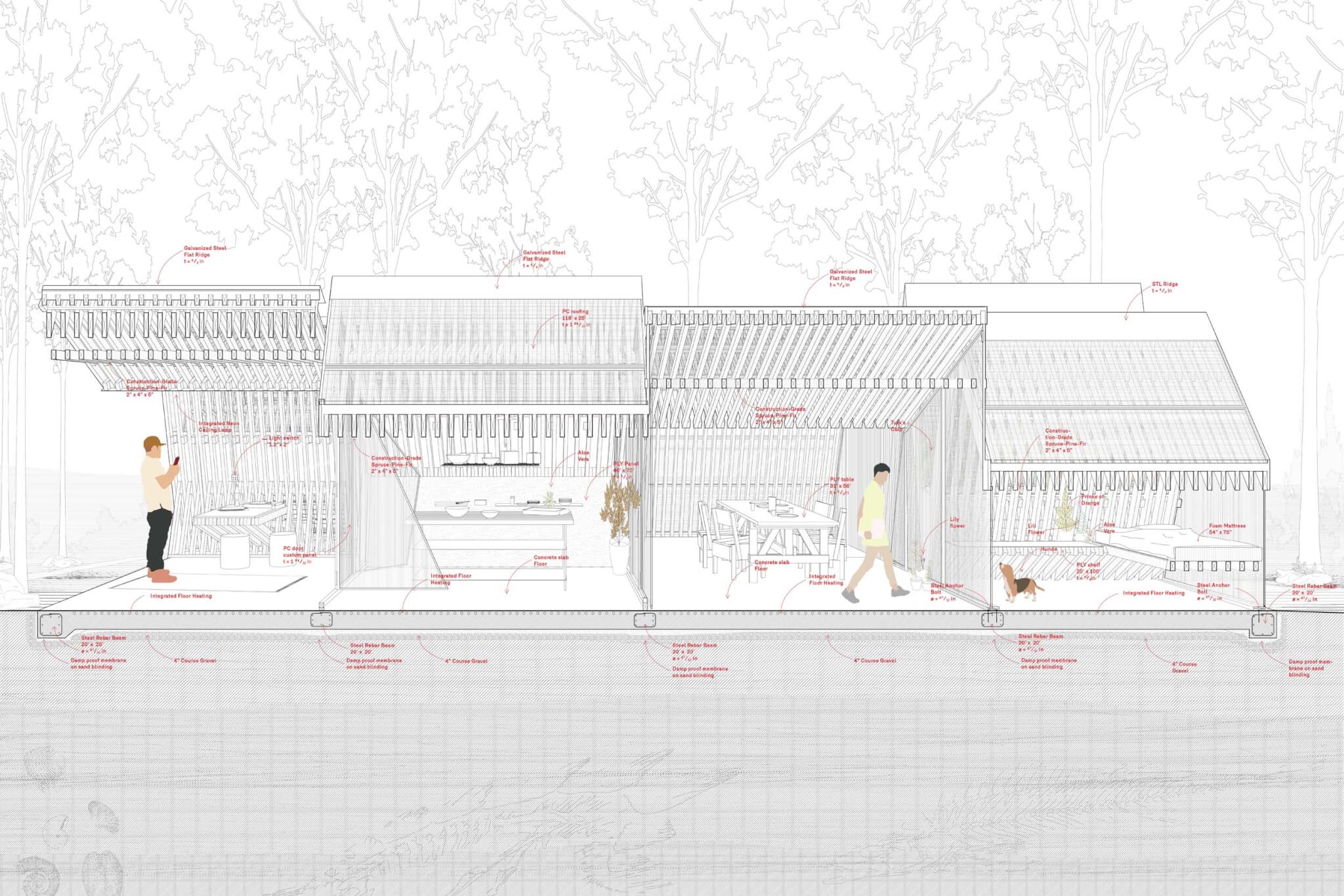
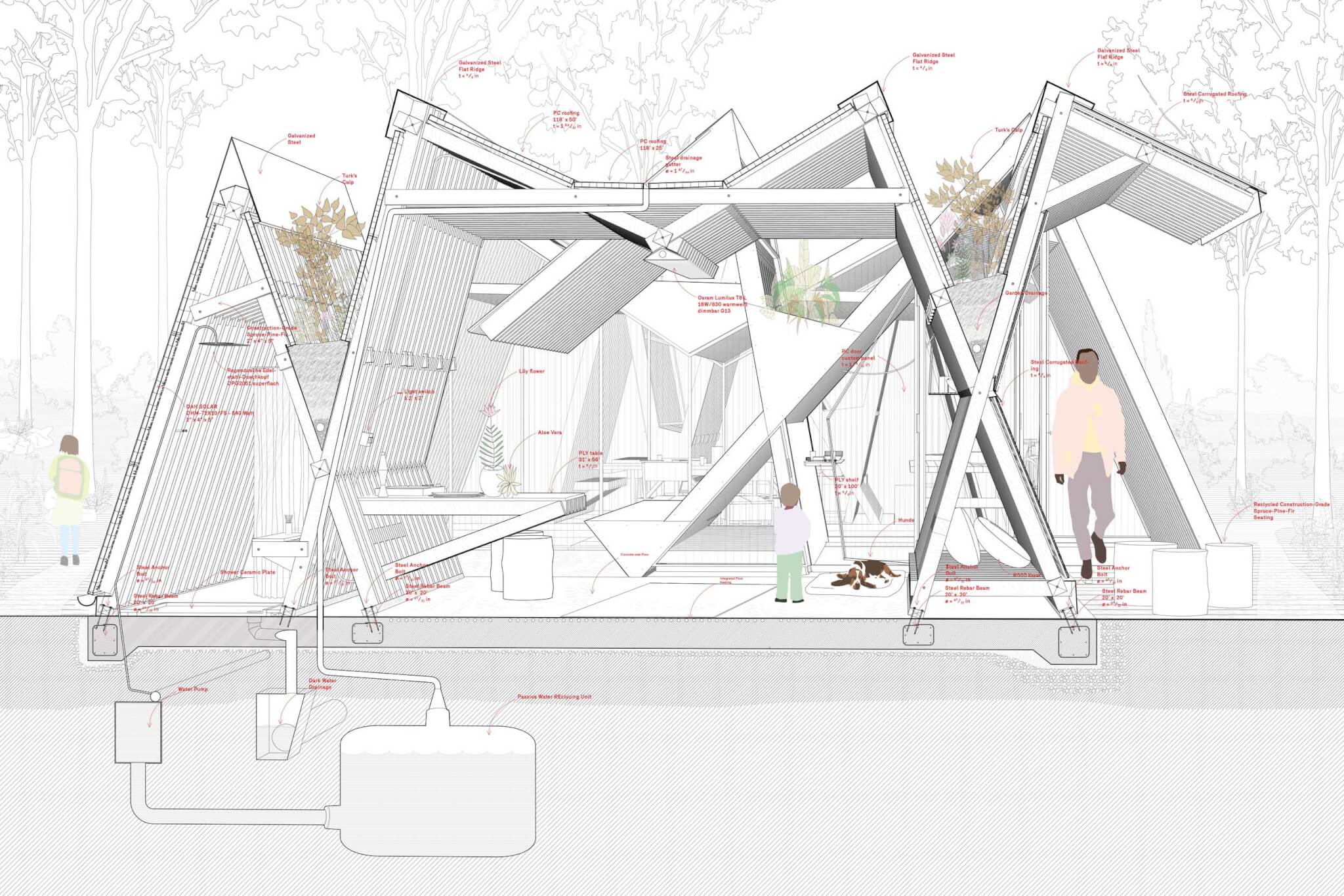
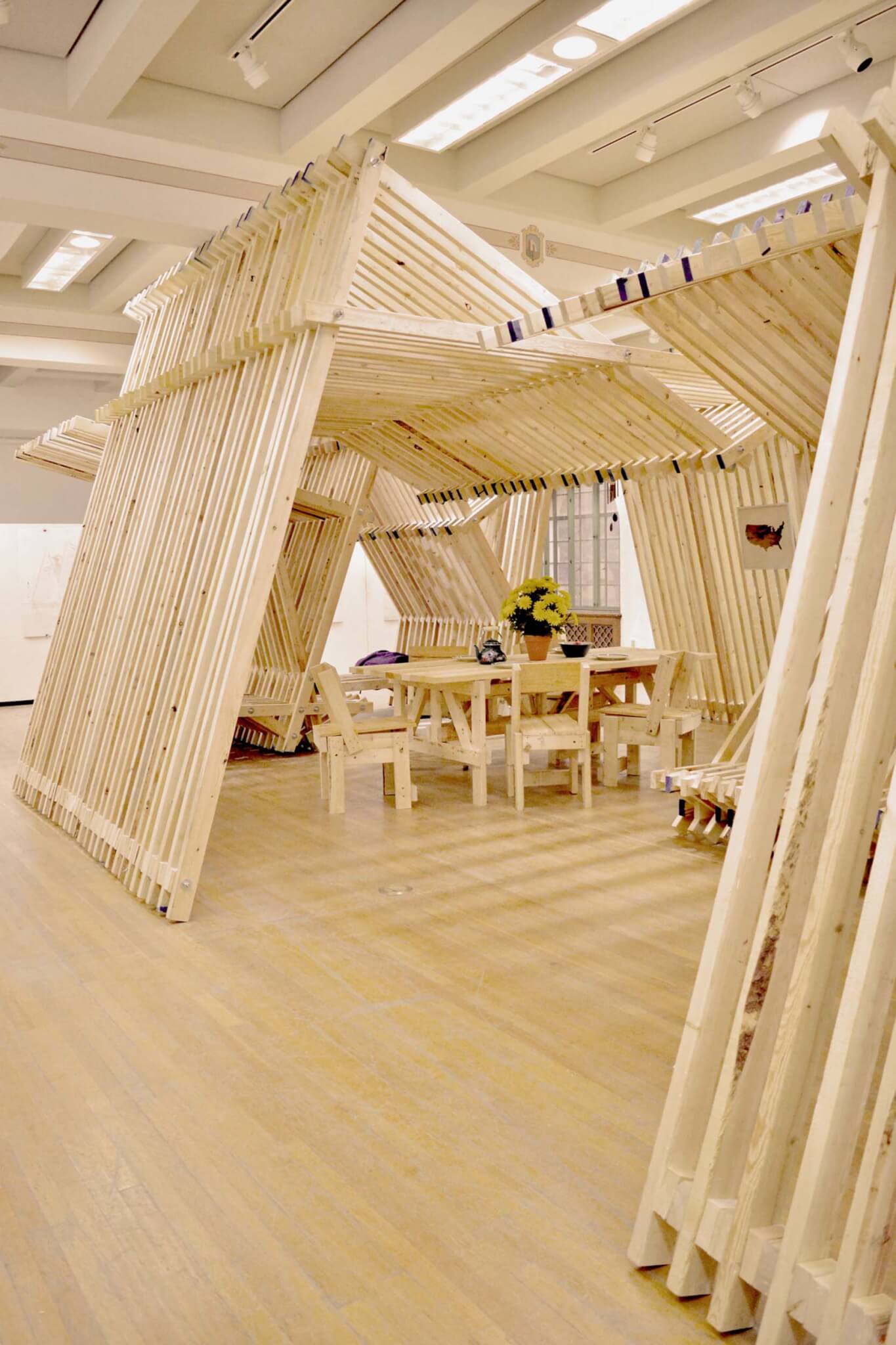
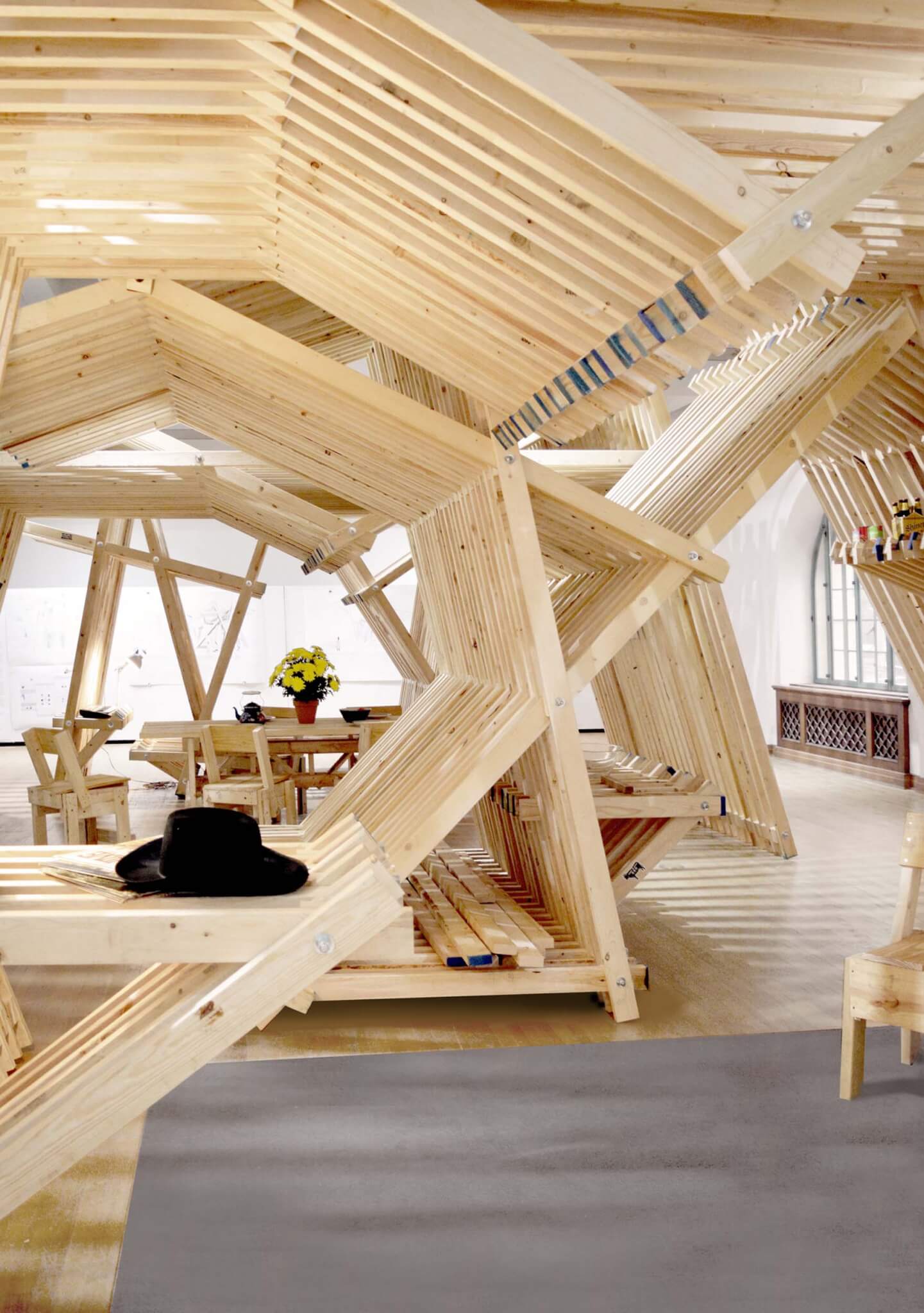
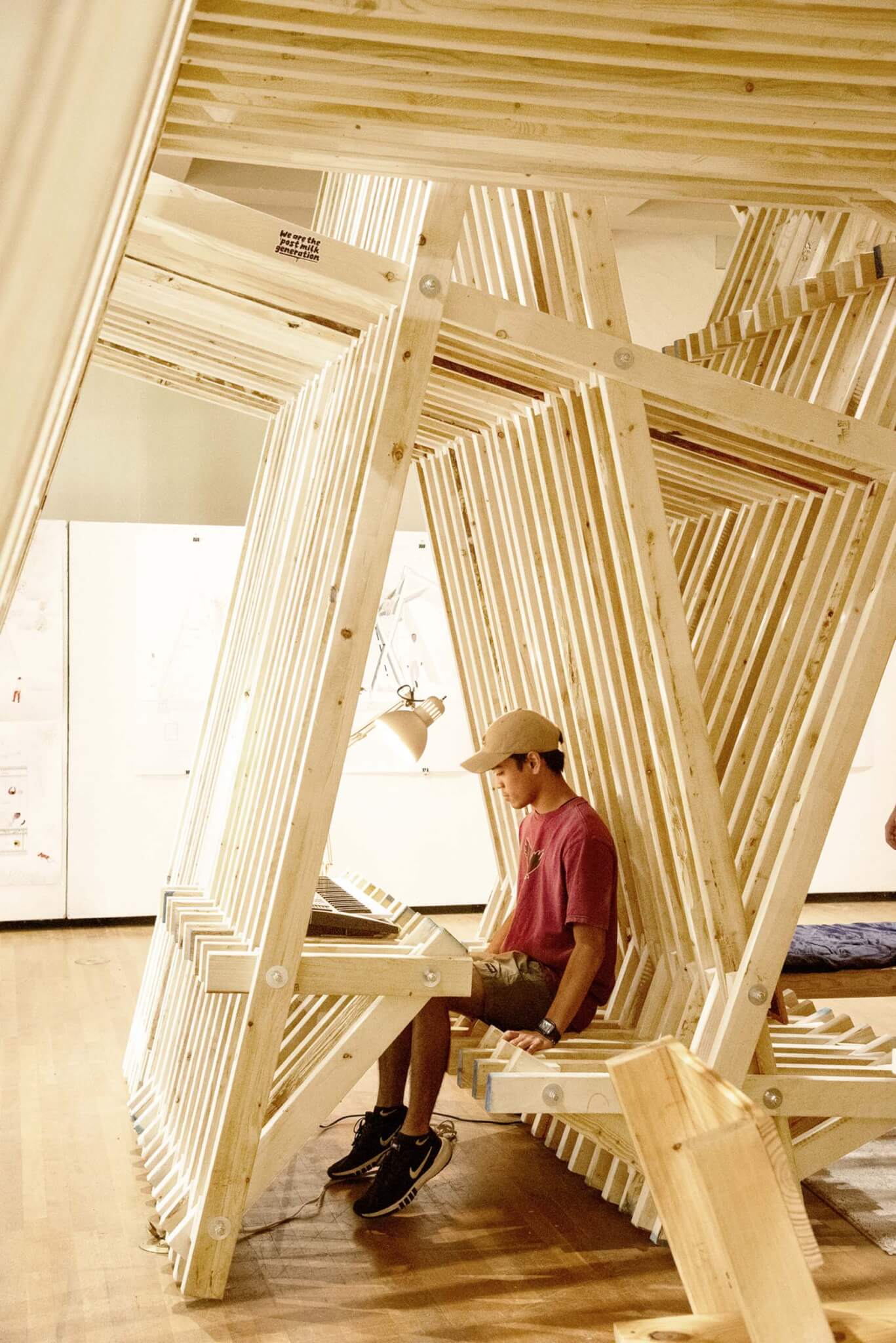
This is the question that Barkow Leibinger asked when designing a shape-shifting installation that was on view at Mebane Gallery at the University of Texas at Austin. The result broke the traditional form of the A-frame using triangulated layers of 2x4s which were attached and cantilevered to create occupiable space within the gallery. Complete with the familiar trappings of home, from a “porch” sheltering a bicycle to a table set for supper within, the architecture encourages us to think outside the box and break down familiar forms to instead find—and make—something unexpected.








